2022 Ford Mustang Vs 2022 Toyota GR Supra Comparison

When I was growing up, my best friend’s mom had an all-white Fox body Mustang. It was the coolest car on the block.
Did I care that the 302 V8 pushed out only a little over 200 horsepower? Or that the four-speed auto was slow? Of course not. I savored any opportunity to ride in the GT, the V8 rumbling in a way I could feel in my stomach.
Get a Quote on a New Ford Mustang or Toyota GR SupraHere in 2022, Everything old is new again, and Ford has given the Mustang an ’80s-inspired Ice White package. Horsepower has more than doubled—and the number of gears, too. Befitting its cruising status, this car runs Ford’s 10-speed automatic. I’m a kid again.
There’s nothing retro about the Toyota GR Supra. (Okay, the badge is ’90s cool.) While the Supra has finally gained a ( very good) manual option for 2023, this fifth-generation model has been an auto-only affair since it arrived in 2019.
An unlikely pairing? Absolutely. Yet if you want a fun, quick, great-looking sports coupe with around 400 horsepower and an auto-box, these are two of the most affordable options in what has become a small club. Managing editor Mike Schlee and I put them to work in everyday scenarios to see which is truly easier to live with and enjoy.
Interior and Cargo Space
Mustang: The Mustang’s interior is like the exterior: chunky and bold. There’s a tall, twin-cowl dashboard that only reinforces the feeling of the nose stretching out ahead. A thick, white bar bifurcates the dashboard, splitting it into two distinct sections: cockpit, and center console. The large, three-spoke steering wheel is necessary, not only to wrangle this pony, but to see the wide digital instrument panel set behind it. The center console is chock-full of aluminum-look rotary dials and toggle switches, the latter giving it a wonderful sense of occasion. Overall interior quality is much better than you’d expect of an affordable pony car. Well, except for the center console, a single-piece plastic-fantastic feature that Ford specifically targeted for improvement for the upcoming 2024 seventh-generation model.
SEE ALSO: 2024 Ford Mustang Refines the Pony, Goes Big on TechJust looking at the two cars, it’s clear the Mustang will have the space advantage inside. And it does, with more headroom and cabin width. The seats help too, big La-Z-Boy loungers compared to the tighter buckets in the Toyota. Great to look at and comfortable on long hauls, the front perches might lack lateral support, but this isn’t the Mustang trim to regularly track, anyway.
Are the second-row seats best suited to tiny humans? Yes. Did I get stuck for a few minutes back there, simply trying to take a photo of the cabin? Also yes. But at least the Mustang has a back seat, for kids or even just cargo overflow. So from that perspective, it’s the winner by default.
The trunk itself is pretty darned capacious at 13.5 cubic feet (382 litres), which isn’t far off the much larger Challenger’s storage space. It’s also a more useful shape than that of the Supra.
Supra: The Supra’s interior design is more low-key cool—yes, even with the red leather. A slimline dashboard keeps ornamentation to a minimum, with a “hidden” vent design, small upright touchscreen, and a row of small audio controls. Move down the center stack and there are a whole bunch of little buttons and a pair of dials handling climate duties.
Material quality is a noticeable step above the Mustang, expected considering the higher price of entry for the Toyota. Schlee notes it’s familiar, but “not in a Toyota way.” In other words, it’s a BMW. Fair, though I’m not too bothered given the sound ergonomics and overall quality. The thin-rimmed steering wheel is definitely not a BMW item, though. It feels great, though that center section and bottom spoke look cheap. The other major operating touchpoint—the shifter—is dainty and easy to use, light taps versus the Mustang’s concerted shoves.
There’s just not much space inside the Supra, be it for people or their things. “Supra is hard to get in and out of, takes a bit of gymnastics,” notes Schlee. He adds that there’s “plenty of room even for those over 6 feet tall,” the latter due to the double-bubble roof. Storage space is pretty much limited to the door pockets and the undersized wireless charging dock. We both ding the Toyota for its altogether terrible sightlines, which make the rear cross-traffic alert and blind-spot monitoring practically mandatory. Of course, there’s still the deafening wind buffeting if you’re driving at anything over city speeds.
SEE ALSO: Chevrolet Corvette vs Porsche 718 Boxster vs Toyota Supra: Sports Car ShootoutThe Supra’s liftback does give it surprising usefulness. There’s less space—around 10.2 cubes (289 L)—and it’s not an ideal shape. But you can fit enough carry-ons or squishy bags for a week or two away.
Bottom Line: The Supra is snug and intimate, yet better quality. The Mustang has more character in its design, and is more comfortable. You can also see out of it, and fit more than one other person in there—at least, in theory. Two very different approaches, but the Supra just edges the category win for us. Why? While it’s less practical, at this price point it’s likely both cars will be sharing the driveway with something else.
2022 Ford Mustang vs 2022 Toyota GR Supra: Tech and Features
Mustang: Ford’s gone and made the Mustang one of the most customizable cars on the road. The combo of 12.0-inch digital instrument panel and 8.0-inch Sync 3 touchscreen allows drivers to tailor much of their experience, be it the ambient lighting, dial style, and performance. The instrument panel itself is the bright point, slick and well-designed. The info is easy to read, and the animations are smooth. Track Apps lets folks check in on g-forces, lap times, and even use launch control and line lock. Overall, it’s a joy to use.
Sync 3 itself is … not very quick. The main touchscreen feels very old-fashioned, but not like the Ice White package itself. More like using an electronic organizer. Stick to the wired Apple CarPlay or Android Auto.
Making the Mustang a smooth everyday ride, the adaptive cruise control is intuitive in its activation and actions. The rest of the driver assists work as advertised, making this a very mild-mannered pony.
Supra: The Supra’s digital suite is altogether simpler. Running an older, column-style version of BMW’s iDrive, it’s as straight-forward as the Ford’s setup but slicker and quicker. The redundant rotary dial—also very un-Toyota—makes it easy to use without having to lean forward and poke around, too.
Conversely, the instrument panel is a disappointment. It barely changes, and can’t offer up the multitude of info that the Mustang can. Glass-half-full opinion: it focuses the driver, and this is a sports car after all. Glass-half-empty: okay, but look at all that wasted space. Why make the space a screen at all if you’re not going to use it?
The Supra’s driver assist suite is similarly simple. The adaptive cruise control is smooth, and the blind-spot and RCTA systems are necessary. There’s something satisfying about a simple Sport mode button, too.
SEE ALSO: 2022 BMW M240i Coupe First Drive Review: Focused on FunBottom Line: The Supra’s touchscreen is better, but the rest of its tech lineup is lacking. The pony car earns a point here in the back and forth affair of the 2022 Ford Mustang vs 2022 Toyota GR Supra.
Powertrain, Driving Feel, and Efficiency
Mustang: The Mustang V8 is one of the greats. Even if it officially lost 10 hp and 10 lb-ft for 2022 (dropping to 450 and 410, respectively), it both sounds great and remains a hugely tractable engine. Wind it up over 7,000 rpm and the Mustang sings, especially with the active exhaust set to one of its more liberal settings. It’s not enough to save the Mustang, though.
“A good car let down by its transmission. It’s a deal breaker alone,” decries Mike. He continues, “it’s constantly hunting for gears, never satisfied to stay put, slow to react, and no drive mode or manual control of the transmission solves these problems.” It’s true: the 10-speed is never satisfied, spending more time between gears than in them. Switching to manual control solves the shuffle, but then you’re left with dull responses from each paddle pull. Manual mode also won’t allow for shifts within rev ranges that the ‘box will pull when left to its own devices. The result is progress that rarely feels smooth.
Not helping matters is this car’s comparatively tame tune. It’s a much larger car than the Supra, with a softer suspension tune and less aggressive Pirelli P Zero tires (255s front and 275s rear). Push the Mustang and you feel the weight at both ends, needing extra time to get settled into a corner before you can lean on the light steering and power through. The suspension heaves over bumps, though it does keep noise to a minimum as it does its business. Ratchet up the drive modes and the feel improves, but it never feels as well-sorted as the Supra. The current-gen Mustang can hunt M4s with the Mach 1 or even the GT Performance Package, but this pearly pony is happier as a cruiser.
Hey, at least you can drive with the windows down and still have a conversation, right?
SEE ALSO: 2021 BMW M4 Competition Review: Smells Like SuccessFuel economy is pretty terrible. Not only are the official ratings rough, at 15 mpg city, 24 mpg highway, and 19 mpg combined, but you’ll be running in manual mode so much that they’ll be hard to hit. We saw the city rating at the end of the week. The Mustang’s tiny fuel tank also means you’re unlikely to go much further than 250 miles (402 km) between fill-ups.
(Canadian figures are 15.2, 9.7, and 12.7 L/100 km, respectively).
Supra: Of the many criticisms I’ve heard about the fifth-gen Supra I’ve heard, it’s the bit about the engine that makes the least sense. History dictates an inline-six, and who amongst the modern auto industry makes a better one than BMW? No, really?
What the 3.0-liter lacks in aural raunchiness versus the Mustang’s 5.0, it more than makes up for in sheer power. There’s no way this thing isn’t putting down at least 400 hp at the wheels, not the crank 382 Toyota quotes. Turbo torque comes in basically off-idle, and holds through half the rev range. Combine that with a relatively light 3,395-pound (1,540-kilogram) curb weight and the Supra is a rocket. It’s also the easier drivetrain to live with in the city, the ZF-sourced eight-speed auto always finding the right ratio for the job.
The Supra is a noisier affair from inside. Not from the engine—it sounds good in that zingy, clean inline-six way—but from every expansion joint and bump. The suspension is well-sorted, quickly settling and remaining on course no matter what the road throws up. It’s just noisy. There’s a lot of wind noise, too.
There’s a definite learning curve to the Supra’s dynamic envelope. The light steering takes some getting used to, a quick ratio with not a lot of feedback. The Supra wants to wag its tail in a way very few modern cars do, which can catch you out if you’re not prepared. Be smooth and deliberate with your inputs, and patient unleashing all that torque, and there’s a satisfying blend of lateral and longitudinal forces through corners. The Supra won’t give up all the goods right away like the Mustang, and you absolutely need a track to explore the upper reaches of what it can do.
SEE ALSO: 2023 Nissan Z Second Drive Review: Zee Grows UpBMW engines are incredibly efficient these days, and the Supra’s is no different. Its 22 mpg city rating isn’t far off the Mustang’s highway number; a 30 mpg rating itself is excellent for a car so powerful. The average is 25 mpg, and it’s one we didn’t have too much trouble approaching. (Hey, we had a lot of fun.) Canadian figures are 10.6, 8.0, and 9.4 L/100 km, respectively.
Bottom Line: The Mustang’s frustrating transmission is enough to hand this category to the Supra. Even looking past that, the Mustang’s busy ride and downright prolific thirstiness are further marks against it.
2022 Ford Mustang vs 2022 Toyota GR Supra: Styling
Mustang: It’s a Mustang. You know what it looks like. Your five-year old niece knows what it looks like. This generation has been with us since 2015, and saw a mild facelift three years later, changing the headlights and freshening up the interior. There are still Mustang cues, but they’re part of an altogether more modern shape that isn’t quite so tied to the nameplate’s history (looking at you, Challenger). This one features the Ice White package, which does what you’d expect, dousing the badges, taillights, mirror caps, wheel pockets, seats, and dashboard in white. It’s an acquired taste for sure, but there’s something so much more friendly about this look than the typical Mustang. Strangely, Vanilla Ice is not programmed to autoplay on every start-up.
Supra: We’ve had a few years to get used to the Supra’s looks, too. It’s still a fussy shape, dependent on color and angle in a way few Toyotas are. The front-end is a little bulbous, but catch it at the right angle and you see the fourth-gen inspiration in the way the fender and headlight shapes interplay. The pointy nose and three-panel bumper serve as reminders of a time in F1 Toyota would probably rather have you forget. Be prepared for friendly ribbing from friends about the sheer number of fake vents peppering the exterior, too. But the Supra feels almost impossibly tight and compact in a time of 15-foot RAV4s. The rear three-quarters is one of the very best angles out there too, at least to these eyes, with the wide rear fenders and that curvaceous trunk lip.
Bottom Line: The Supra has rarity on its side. Mike noted it “got a lot of attention everywhere it went. The paint job helped, but the Mk5 Supra is not a dime a dozen like the Mustang.” There’s that timeless appeal of the Mustang’s muscle car shape, too. We like ’em both, but for very different reasons.
SEE ALSO: Drag Racing a Sienna Against a Supra in the Snow is a Teachable MomentPricing and Value
Mustang: Ford lets folks go HAM with optioning their Mustang. That’s part of the appeal, after all: a pony all your own.
While the EcoBoost’s affordability is well-known, this GT Premium fastback is pretty much the most expensive ‘Stang you can get before dipping into Mach 1 or Shelby territory. The basic price is $44,460 ($51,990 CAD), including destination. From there, our tester racked up five digits of options. The Ice White package ($1,995 / $2,995 CAD) is but one add-on: there’s also the active valve exhaust ($1,225 / $1,295 CAD), upgraded B&O sound system ($995 / $1,000 CAD), and a few other options. The autobox is another $1,595 ($1,750 CAD), too. The final price tag is $54,850 ($63,380 CAD),
Supra: Unlike the Mustang, ordering a 2022 Supra is pretty straight-forward. In the US, there’s the base four-cylinder model, the inline-six 3.0 and 3.0 Premium, and the limited-edition A91-CF. For a few extra grand, the Premium ($56,135, including destination) is a worthy upgrade over the basic 3.0, with a better infotainment setup, full-leather (heated) seats, HUD, wireless charger, and a few other upgrades. The only options are interior and exterior colors, and the driver assist package, which adds dynamic cruise control, the very useful rear cross-traffic alert with blind-spot monitoring, and parking sensors. As equipped, this tester would run $58,825 including destination.
The choices are even simpler in Canada. There’s just one inline-six model, and it comes with all the optional equipment you’ll find in the US. You’ll still have to pay for premium paints though, like the matte Phantom here. Final tally: $71,895 CAD, including destination.
SEE ALSO: 2021 Ford Mustang Mach-E GT Review: Quicker, Yet CompromisedBottom Line: In the battle of the 2022 Ford Mustang vs 2022 Toyota GR Supra, the muscle car still holds its price advantage, though as-tested it’s certainly not as cheap as you might think. Nonetheless, you’re getting a better-equipped car for less coin, so the Mustang has the win here.
2022 Ford Mustang vs 2022 Toyota GR Supra: Verdict
Both Mike and I preferred the Supra over the week. It gets a lot of crap from folks for its BMW ties, but look beyond the played out jokes (ugh they stopped being funny about two hours after the Supra debuted), and there’s a serious sports car with a unique character here. The Toyota is sharp and playful, with a depth of character that takes time (and a track) to really explore. Nobody is buying either of these cars as their only means of transportation, so the Supra’s inferior everyday-ness is less of an issue.
The Mustang isn’t without its charms, that characterful V8 being top amongst them. It is marginally the better city ride, though that transmission is at its most indecisive at low speeds. You do still get a heck of a lot of car for the money, too.
It’s a win for the Supra, then. We look forward to a rematch next year with the 2024 ‘Stang—and maybe both of them will have three pedals this time.
Become an AutoGuide insider. Get the latest from the automotive world first by subscribing to our newsletter here.

Kyle began his automotive obsession before he even started school, courtesy of a remote control Porsche and various LEGO sets. He later studied advertising and graphic design at Humber College, which led him to writing about cars (both real and digital). He is now a proud member of the Automobile Journalists Association of Canada (AJAC), where he was the Journalist of the Year runner-up for 2021.
More by Kyle Patrick



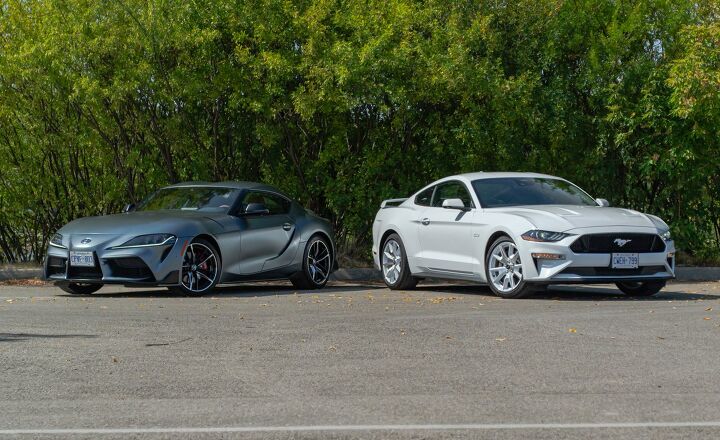



































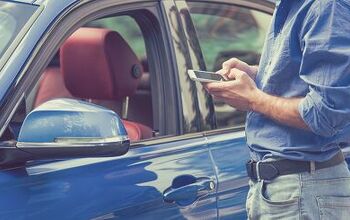
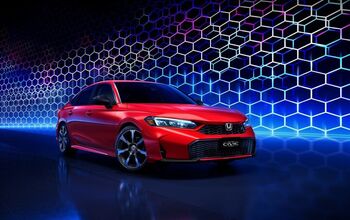


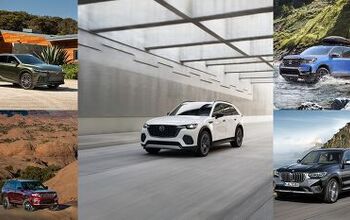

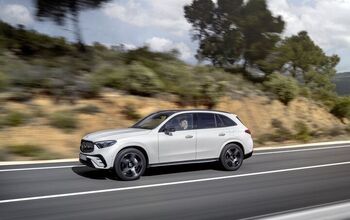



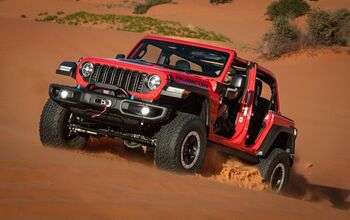
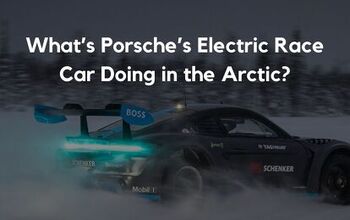

Comments
Join the conversation
Sorry Supra.so many useless so called vents! The GT Ford wins in the Looks Dept. The Supra wins in the power dept..yes BMW straight 6.over the Ford V8. However, if I were to consider the Supra.I would go direct to BMW M240. Delbert R Smith